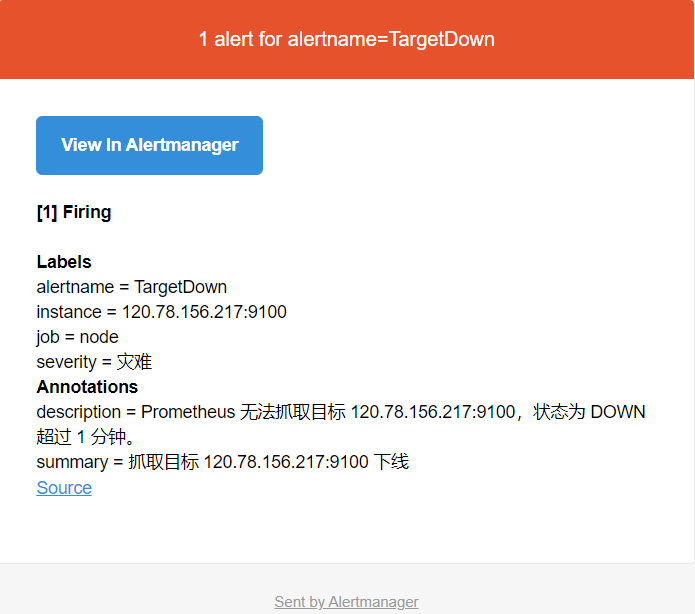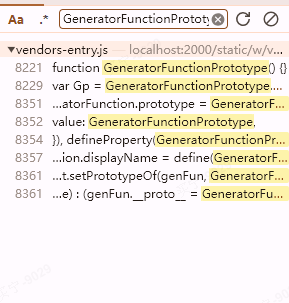相对接近产品交付形态的实现:基于DTW距离的KNN算法实现股票高相似筛选案例-CSDN博客
一、问题背景和思路
问题背景:如果你有历史股票的K线图,怎么从众多股票K线图中提取出TopN相似的几支股票,用来提供给投资者或专家做分析、决策参考使用呢?
问题理解:股票K线图中除了时间点数据,还包含每个时间的4个数据 最高价、最低价、开盘价和收盘价。下文中我们均使用每日的股票收盘价作为股票走势曲线,基于此给出一个找出TopN相似股票曲线的方案和代码实现。这里先假设没有标记过的相似曲线样本,使用无监督的方法去做。
方案思路:上面我们把问题简化为找出最相似的2条曲线,那么就需要先找一个度量算法,怎么度量两条曲线的相似性或距离。如果度量算法符合我们的先验经验,比如我们人工标示最相似的两条曲线,算法给出的距离度量也是最小的,我们判断最不相似的,算法给出的距离度量也是最大的。那么度量算法就是可以拿来做排序使用的。有了判断两条曲线距离度量的算法,且算法结果具有一定的排序性,那么就可以计算出任两条曲线的距离度量值,根据此值就可以给出与指定股票曲线最相似的TopN股票曲线。
有不少曲线相似度算法可供选择,但每种都有自己的局限和适合的场景。比如:
1、欧几里德距离(Euclidean Distance):
适用场景:适用于曲线样本数相同的情况,当曲线具有明显的平移和缩放变换时表现较好。
2、动态时间规整(Dynamic Time Warping,DTW):
特点:考虑了时间轴的变化,能够捕捉曲线的形状相似性。对于时间轴缩放和平移具有一定的容忍性。
适用场景:适用于曲线在时间上存在变换、平移、扭曲等情况,比如语音识别、时间序列数据分析等。
3、余弦相似度(Cosine Similarity):
特点:忽略了曲线的振幅,只关注其方向。适用于振幅不重要的情况。
适用场景:文本分类、推荐系统中用户兴趣相似性等。
4、皮尔逊相关系数(Pearson Correlation Coefficient):
特点:衡量线性相关性,取值范围在-1到1之间。
适用场景:适用于评估两个变量之间的线性关系,不仅限于时间序列数据。
5、曼哈顿距离(Manhattan Distance):
特点:考虑了各维度之间的差异,适用于具有多维度的曲线数据。
适用场景:图像识别、多维时间序列分析等。
6、动态核相关(Dynamic Kernel Correlation,DKC):
特点:将时间序列映射到高维特征空间中,计算相关性。可以捕获非线性关系。
适用场景:适用于非线性关系较为复杂的时间序列数据。
7、平均绝对误差(Mean Absolute Error,MAE):
特点:衡量实际值和预测值之间的差异。
适用场景:用于衡量预测模型的精度,例如回归模型的性能评估。
二、代码简单实现
下面使用DTW算法作为两条曲线的相似性度量算法,mock下数据简单做一个实现。
2.1 mock股票数据
这里简单mock下数据代表x,y,z三支股票的K线图。或者申请下股票网站的API接口做下数据爬虫。
假设x股票是我们在观察想投资的股票,y,z股票是希望去比较的股票。
%matplotlib inline
import matplotlib.pyplot as plt
import numpy as np
# We define two sequences x, y as numpy array
# where y is actually a sub-sequence from x
x = np.array([2, 0, 1, 1, 2, 4, 2, 1, 2, 0]).reshape(-1, 1)
y = np.array([1, 1, 2, 4, 2, 1, 2, 0, 0, 0]).reshape(-1, 1)
z = np.array([3, 2, 2, 4, 2, 3, 2, 0, 2, 3]).reshape(-1, 1)
plt.plot(x, label='x', color= (0.7,0.2,0.1))
plt.plot(y, label='y', color= (0.2,0.1,0.7))
plt.plot(z, label='z', color= (0.2,0.7,0.1))
plt.title('Our two temporal sequences')
plt.legend()
2.2 DTW算法度量曲线相似性
根据这里mock的数据,人工也能判断y该是与x曲线最接近的,z次之。首先验证下DTW算法得出的曲线距离排序性的结论是不是跟人工判断的一致。
(1) 首先曲线x与自身的dtw距离是0,即相关性最大
%matplotlib inline
import matplotlib.pyplot as plt
import numpy as np
x = np.array([2, 0, 1, 1, 2, 4, 2, 1, 2, 0]).reshape(-1, 1)
plt.plot(x, label='x', color= (0.7,0.2,0.1))
plt.title('Our two temporal sequences')
plt.legend()
from dtw import dtw
# dtw算法中使用 L2 norm 作为元素比较距离
l2_norm = lambda x, y: (x - y) ** 2
dist11, cost_matrix11, acc_cost_matrix11, path11 = dtw(x, x, dist=l2_norm)
print("曲线x与曲线x的dtw距离:",dist11)
plt.imshow(acc_cost_matrix11.T, origin='lower', cmap='gray', interpolation='nearest')
plt.plot(path11[0], path11[1], 'w')
plt.show()
(2)曲线x与y距离 小于 x与z的距离,即x与y相关性 高于x与z
dist1, cost_matrix1, acc_cost_matrix1, path1 = dtw(x, y, dist=l2_norm)
dist2, cost_matrix2, acc_cost_matrix2, path2 = dtw(x, z, dist=l2_norm)
print("曲线x与曲线y的dtw距离:",dist1)
print("曲线x与曲线z的dtw距离:",dist1)
plt.imshow(acc_cost_matrix1.T, origin='lower', cmap='gray', interpolation='nearest')
plt.imshow(acc_cost_matrix2.T, origin='lower', cmap='gray', interpolation='nearest')
plt.plot(path1[0], path1[1], 'w')
plt.plot(path2[0], path1[1], 'w')
plt.show()
dtw算法dtw(x,y)=2 < dtw(x,z)=18 判断曲线y与曲线x的距离小于曲线z与x的距离,即相关性更高,符合期望,所以可以作为股票相关性算法使用。
(3)使用DTW算法计算出与曲线x高相关的TopN曲线
将更多股票曲线数据与x曲线比较,找出距离最短的TopN曲线,即为TopN高相关股票曲线。
x_similaritys = {}
# 假设stock_data中存放里足够多的股票和其k线数据
for stock_name, k_line in stock_data:
dist, cost_matrix, acc_cost_matrix, path = dtw(x, k_line, dist=l2_norm)
if stock_name not in x_similaritys.keys():
x_similaritys[stock_name] = dist
#选出与x曲线Top10相似曲线
res = sorted(x_similaritys.items(), key=lambda x: x[1])
print(res[:10])Done
三、延伸阅读:关于DTW距离算法在KNN近邻算法中的应用
KNN近邻算法中使用DTW距离算法的代码实现,github代码
import sys
import collections
import itertools
import numpy as np
import matplotlib.pyplot as plt
from scipy.stats import mode
from scipy.spatial.distance import squareform
plt.style.use('bmh')
%matplotlib inline
try:
from IPython.display import clear_output
have_ipython = True
except ImportError:
have_ipython = False
class KnnDtw(object):
"""K-nearest neighbor classifier using dynamic time warping
as the distance measure between pairs of time series arrays
Arguments
---------
n_neighbors : int, optional (default = 5)
Number of neighbors to use by default for KNN
max_warping_window : int, optional (default = infinity)
Maximum warping window allowed by the DTW dynamic
programming function
subsample_step : int, optional (default = 1)
Step size for the timeseries array. By setting subsample_step = 2,
the timeseries length will be reduced by 50% because every second
item is skipped. Implemented by x[:, ::subsample_step]
"""
def __init__(self, n_neighbors=5, max_warping_window=10000, subsample_step=1):
self.n_neighbors = n_neighbors
self.max_warping_window = max_warping_window
self.subsample_step = subsample_step
def fit(self, x, l):
"""Fit the model using x as training data and l as class labels
Arguments
---------
x : array of shape [n_samples, n_timepoints]
Training data set for input into KNN classifer
l : array of shape [n_samples]
Training labels for input into KNN classifier
"""
self.x = x
self.l = l
def _dtw_distance(self, ts_a, ts_b, d = lambda x,y: abs(x-y)):
"""Returns the DTW similarity distance between two 2-D
timeseries numpy arrays.
Arguments
---------
ts_a, ts_b : array of shape [n_samples, n_timepoints]
Two arrays containing n_samples of timeseries data
whose DTW distance between each sample of A and B
will be compared
d : DistanceMetric object (default = abs(x-y))
the distance measure used for A_i - B_j in the
DTW dynamic programming function
Returns
-------
DTW distance between A and B
"""
# Create cost matrix via broadcasting with large int
ts_a, ts_b = np.array(ts_a), np.array(ts_b)
M, N = len(ts_a), len(ts_b)
cost = sys.maxsize * np.ones((M, N))
# Initialize the first row and column
cost[0, 0] = d(ts_a[0], ts_b[0])
for i in np.arange(1, M):
cost[i, 0] = cost[i-1, 0] + d(ts_a[i], ts_b[0])
for j in np.arange(1, N):
cost[0, j] = cost[0, j-1] + d(ts_a[0], ts_b[j])
# Populate rest of cost matrix within window
for i in np.arange(1, M):
for j in np.arange(max(1, i - self.max_warping_window),
min(N, i + self.max_warping_window)):
choices = cost[i - 1, j - 1], cost[i, j-1], cost[i-1, j]
cost[i, j] = min(choices) + d(ts_a[i], ts_b[j])
# Return DTW distance given window
return cost[-1, -1]
def _dist_matrix(self, x, y):
"""Computes the M x N distance matrix between the training
dataset and testing dataset (y) using the DTW distance measure
Arguments
---------
x : array of shape [n_samples, n_timepoints]
y : array of shape [n_samples, n_timepoints]
Returns
-------
Distance matrix between each item of x and y with
shape [training_n_samples, testing_n_samples]
"""
# Compute the distance matrix
dm_count = 0
# Compute condensed distance matrix (upper triangle) of pairwise dtw distances
# when x and y are the same array
if(np.array_equal(x, y)):
x_s = np.shape(x)
dm = np.zeros((x_s[0] * (x_s[0] - 1)) // 2, dtype=np.double)
p = ProgressBar(shape(dm)[0])
for i in np.arange(0, x_s[0] - 1):
for j in np.arange(i + 1, x_s[0]):
dm[dm_count] = self._dtw_distance(x[i, ::self.subsample_step],
y[j, ::self.subsample_step])
dm_count += 1
p.animate(dm_count)
# Convert to squareform
dm = squareform(dm)
return dm
# Compute full distance matrix of dtw distnces between x and y
else:
x_s = np.shape(x)
y_s = np.shape(y)
dm = np.zeros((x_s[0], y_s[0]))
dm_size = x_s[0]*y_s[0]
p = ProgressBar(dm_size)
for i in np.arange(0, x_s[0]):
for j in np.arange(0, y_s[0]):
dm[i, j] = self._dtw_distance(x[i, ::self.subsample_step],
y[j, ::self.subsample_step])
# Update progress bar
dm_count += 1
p.animate(dm_count)
return dm
def predict(self, x):
"""Predict the class labels or probability estimates for
the provided data
Arguments
---------
x : array of shape [n_samples, n_timepoints]
Array containing the testing data set to be classified
Returns
-------
2 arrays representing:
(1) the predicted class labels
(2) the knn label count probability
"""
dm = self._dist_matrix(x, self.x)
# Identify the k nearest neighbors
knn_idx = dm.argsort()[:, :self.n_neighbors]
# Identify k nearest labels
knn_labels = self.l[knn_idx]
# Model Label
mode_data = mode(knn_labels, axis=1)
mode_label = mode_data[0]
mode_proba = mode_data[1]/self.n_neighbors
return mode_label.ravel(), mode_proba.ravel()
class ProgressBar:
"""This progress bar was taken from PYMC
"""
def __init__(self, iterations):
self.iterations = iterations
self.prog_bar = '[]'
self.fill_char = '*'
self.width = 40
self.__update_amount(0)
if have_ipython:
self.animate = self.animate_ipython
else:
self.animate = self.animate_noipython
def animate_ipython(self, iter):
print('\r', self,)
sys.stdout.flush()
self.update_iteration(iter + 1)
def update_iteration(self, elapsed_iter):
self.__update_amount((elapsed_iter / float(self.iterations)) * 100.0)
self.prog_bar += ' %d of %s complete' % (elapsed_iter, self.iterations)
def __update_amount(self, new_amount):
percent_done = int(round((new_amount / 100.0) * 100.0))
all_full = self.width - 2
num_hashes = int(round((percent_done / 100.0) * all_full))
self.prog_bar = '[' + self.fill_char * num_hashes + ' ' * (all_full - num_hashes) + ']'
pct_place = (len(self.prog_bar) // 2) - len(str(percent_done))
pct_string = '%d%%' % percent_done
self.prog_bar = self.prog_bar[0:pct_place] + \
(pct_string + self.prog_bar[pct_place + len(pct_string):])
def __str__(self):
return str(self.prog_bar)
DTW算法计算两条曲线的距离:
time = np.linspace(0,20,1000)
amplitude_a = 5*np.sin(time)
amplitude_b = 3*np.sin(time + 1)
m = KnnDtw()
distance = m._dtw_distance(amplitude_a, amplitude_b)
fig = plt.figure(figsize=(12,4))
_ = plt.plot(time, amplitude_a, label='A')
_ = plt.plot(time, amplitude_b, label='B')
_ = plt.title('DTW distance between A and B is %.2f' % distance)
_ = plt.ylabel('Amplitude')
_ = plt.xlabel('Time')
_ = plt.legend()



















